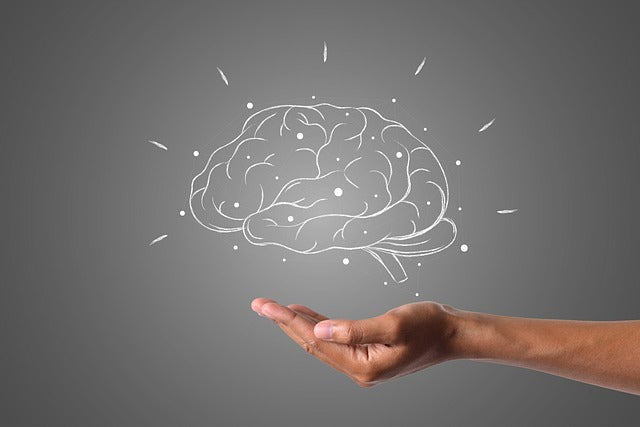5 Things You Should Know About Detox
Detoxification is no longer just a protocol for people with acute toxin exposure. Today we all have unwanted compounds in our bodies that have built up simply by living on planet Earth. Over time we accumulate environmental toxins through the altered air we breathe, the increasingly unnatural foods we eat, the artificially flavored drinks we consume, and even the substances we put on our skin to look and feel better.
It’s hard to avoid toxins: They’re everywhere we are. But understanding what they mean to our bodies is the first step to ensuring they don’t take over. There are many things you can do now to reduce your toxic load. Here are five things you should know about detoxing — and how you can do it safely.
1. Toxin exposure is very real in a modern world.
Humans are routinely exposed to over 84,000 chemicals (many untested for safety because they were grandfathered in by the Toxic Substances Act). In fact, the average newborn has almost 300 toxins in his or her umbilical cord blood. One of the most significant issues is heavy metals exposure, which comes on the heels of increased industrial, agricultural, and technological applications in our modern world.
Coal-burning power plants, plastics, textiles, electronics, wood preservation, and paper processing also send metals where they shouldn’t be — our bodies. Damage from heavy metals can go as deep as our DNA, and countless other toxins contribute to a variety of human illnesses.
2. Your liver is your body’s predominant detoxifying organ.
Your liver filters everything you ingest, helps usher toxins out of the body, regulates blood sugar levels, stores extra sugar in the form of glycogen, and converts extra carbohydrate and protein into forms that can be stored for later use. It also produces the body’s “liquid gold”— bile — which breaks down fats so they can be absorbed and carries wastes out in the stool.
We rely on this remarkable organ to help clear an onslaught of everyday toxicants from chemicals and pollution to sweets, sodas, and excess alcohol. And constant stress only makes it worse. According to the Mayo Clinic, nonalcoholic fatty liver disease affects an estimated 80 to 100 million people in the United States. Rejuvenating the liver — our built-in cleanser — can offset everything from dangerous cholesterol levels to hormone imbalances while also supporting energy, brain function, and the all-encompassing daily detoxification process.
3. Glutathione, “the mother of all antioxidants,” is your best friend.
Your liver relies on many enzymes and molecules to detoxify, but the most important may be glutathione. Nicknamed the “mother” of all antioxidants, it is the body’s quintessential defense against toxins. There are more than 142,000 peer review articles about glutathione on the “pubmed” database. Up-regulating the body’s glutathione supersystem supports a foundational detoxification process that’s always at work in the body.
Whether made inside the body, at particularly high levels in the liver, or taken as a liquid supplement that goes to the bloodstream, glutathione works by linking to many unwanted compounds and helping remove them via liver, GI tract, and kidneys from the body. The mother of all antioxidants can also help protect your cells from damage caused by peroxides, pollutants, metals and more, not to mention support metabolic energy.
4. Bile and “binding” help your body move and mop up toxins.
Your natural dominant detox pathway flows from the liver to the intestinal tract and out through fecal excretion. To cleanse your GI tract properly, you need the two big Bs: bile and binders. Bile acids, that liquid gold made in the liver, acts as a “molecular detergent,” helping to promote healthy inflammation levels while mobilizing and mopping up toxins that are then “folded” into feces and safely eliminated. The problem is that many toxins are reabsorbed by the body before they get to excretion through the GI tract. That’s where binder comes in.
Binders in supplemental form may further the detox process. Glutathione, the body’s master antioxidant, works innately to bind, neutralize, and move toxins out of your tissues. Supplementary binders can accelerate this process by safely linking to and intercepting toxins. But there is no universal binder that has an equal affinity for all toxins. Only a binder “blend” can mobilize metals, mercury, endotoxins from ‘bad’ bacteria, and other persistent pollutants and chemicals.
5.There are clear signs when your body is toxic.
It’s not a stretch to say that an imbalanced gut is the root of all evil. Your gut flora, when balanced, help prevent harmful bacteria from growing. When the gut is out of whack, “bad” bacteria may multiply, proliferate, and release “endotoxin,” which can increase intestinal “permeability” and inflammation. In turn, inflammation advances oxidative stress, which depletes our most potent internal antioxidant, glutathione.
And you know what happens without sufficient glutathione: Toxins are not efficiently neutralized and transported out of cells. Some common signs of gut imbalance include flatulence, irritable bowel syndrome, bloating, discomfort after eating, fatigue after eating, halitosis (bad breath), food sensitivities, and allergies.
Poor liver function and slow bile flow are also precursors for toxic buildup. There will also be decreased liver synthesis of glutathione. Symptoms to watch for include constipation, acid reflux, gallbladder stones, headaches, fatigue, light-colored and foul-smelling greasy stool, dry skin, hair loss, and an achy feeling in the liver area.
So what can you do to stay on top of detox? Try to reduce your toxin exposure, make dietary changes to protect your gut, learn how you can unblock key detox pathways, and choose some targeted supplements to speed a safer form of detoxification.




